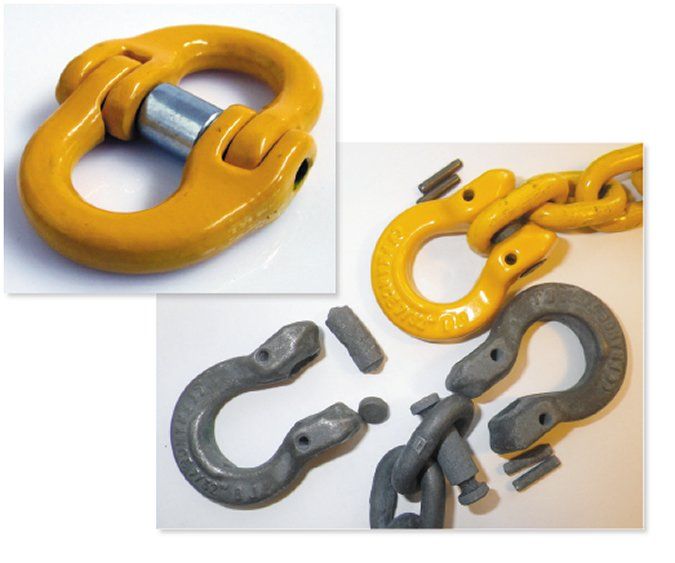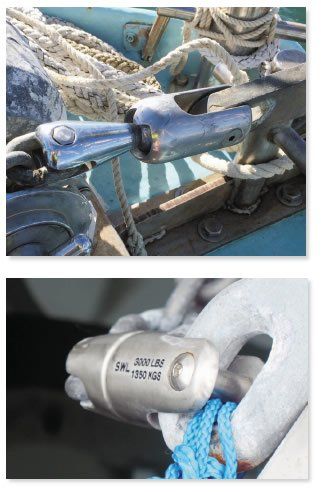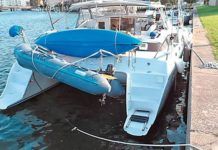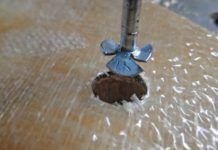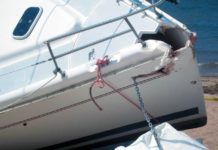Mailport: Tourniquets at Sea
Add a tourniquet to your first aid kit and know how to use correctly - it is less likely to accidentally loosen or inflict additional tissue damage.For further training, I would refer you to the American Red Cross, they have a Basic and Advanced First Aid certification, and along with the American Heart Association offer classes in cardiopulmonary resuscitation, and the use of automated external defibrillators (AEDs).
High-Tech Anchor Rode
My primary anchor is a big hunk of steel on an all-chain rode, handled by a windlass. Secure in all bottoms, idiot proof, easy to handle, and thus perfect for everyday use. But when the need arises to set a second anchor-either to restrict swing or to increase holding in horrible mud-the last thing I want is a heavy steel anchor connected to chain that I have to drag across deck.
Fenders and Lines for Seawalls
To the lubber, tying-up to a bulkhead seems like the simplest of all docking situations. Perhaps with floating docks this is true. You just throw in a few fenders and tie a few lines. Simple. But in the world of tidal bulkheads with pilings or rough concrete facings, it is often a hammer and anvil situation, with the wind and waves hammer incessantly as the anvil moves up and down with the tide, causing fenders to slip out of position.
Dodging a Bullet When Caught on Bulkhead
The following is aimed primarily at boats that are unable to leave an alongside dock or bulkhead before wind and seas become dangerous. Any fetch beyond 200 yards is dangerous, and there may be nothing you can do to protect the boat. However, if you are in a protected marina, well up a creek, and the storm is moderate, these actions can help. Just remember that low breakwaters will be overtopped, wooden breakwaters fall apart, other boats will come loose, and there will be lumber in the water from broken docks.
Make Your Own Rugged Fender Boards
We described a simple home-built version several years ago (Practical Sailor, December 2011); here we present a few simple upgrades on the same basic design, allowing for simpler deployment, better fender retention, and more stable positioning. Pressure treated lumber provides inexpensive durability.
Reliable Chain Connections
We often get asked about joining two shots of chain together without compromising strength. You have a number of options-including some that are just plain bad. The important thing is to make sure the connector is of the highest quality and that it matches or exceeds the strength of your existing chain.
Carving Out Cores
A modified roofing nail is perhaps the most versatile tool for removing core when sealing fastener holes. It is much easier to control than bent nails or cut-down allen keys, which can jump around as they spin. Core removal is more uniform. Wood chips are finer and easier to remove. It is faster than a Dremel cutter and undercuts twice as far.
Elastic Mooring Systems
When Hurricane Irma plowed through the Florida Keys, it left behind both a trail of destruction and a wealth of information for us to learn from. One of the most instructional episodes took place at the municipal mooring field at Boot Key in Islamorada.
Screw types prove their mettle in load testing.
The mechanics at work at the other end of your mooring line matter as much as the mooring line and pendant. In 2009, Practical Sailor reported on two pull tests held 12 years apart (See Mooring Anchors for Sensitive Seabeds, Practical Sailor August 2009). We also reported on the results of a third test being carried out by contractors for the City of Sarasota, which at that time was about to become one of Floridas seven pilot mooring fields. Boot Key Mooring Field, which took a near direct hit from Hurricane Irma in 2017, was another harbor participant in the program (see adjacent article).
Most well-made cleats fit the bill, but beware.
In the 90s, the Boat US Foundation performed a study of deck cleat strength. Testing was performed using 6-inch cleats of a number of materials and designs, which were pulled from several directions. The standard vendor recommendation is 1/16-inch of line size for each inch of cleat, so these cleats are recommended for use with 3/8-inch line (breaking strength 4,200 pounds, working load limit 525 pounds). All but the nylon cleat had working load limits (assume 4:1 safety factor for metals) greater than nylon rope. Most were nearly as strong as the rope, but only two were stronger than the rope in all directions. We can expect strength to go up roughly as the square of size, roughly matching rope strength as we go. Only a few broken cleats were noted among the boats damaged by Hurricane Irma. More commonly, the cleats pulled out of the deck.
































